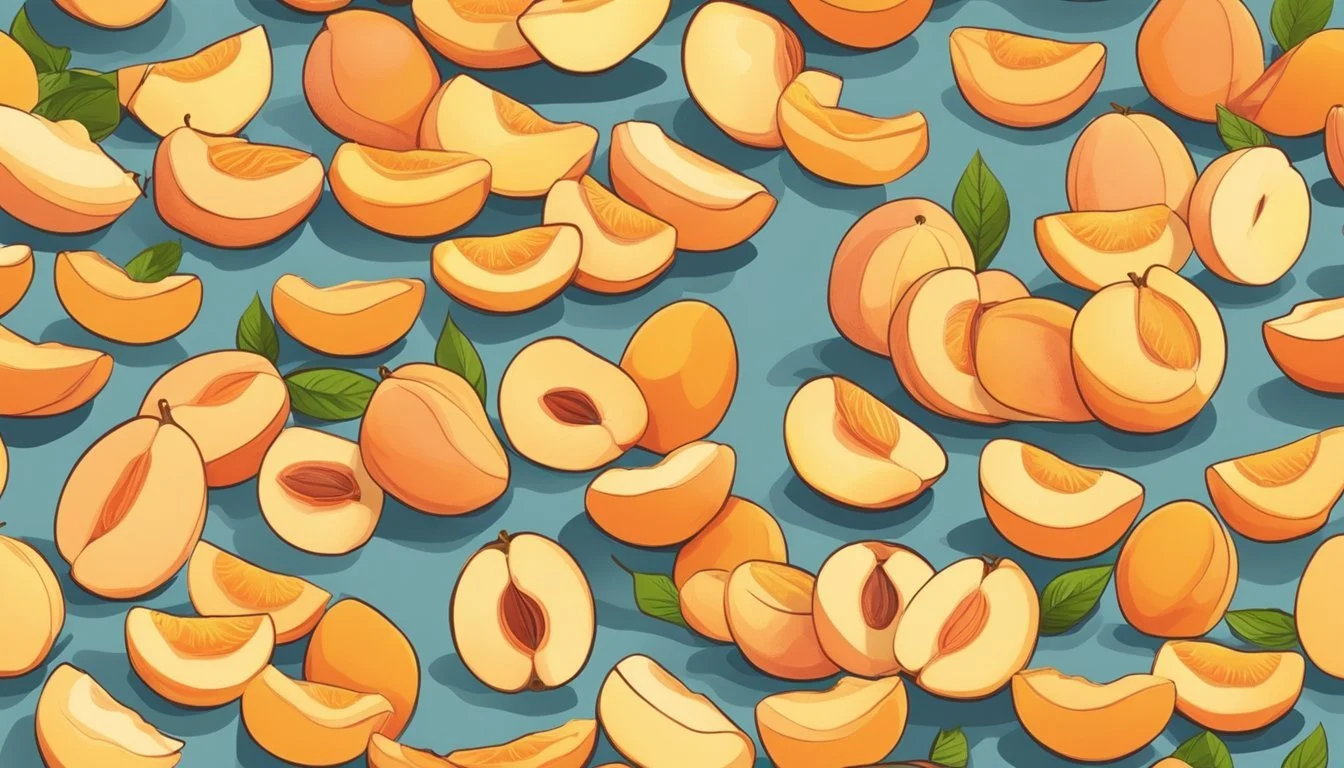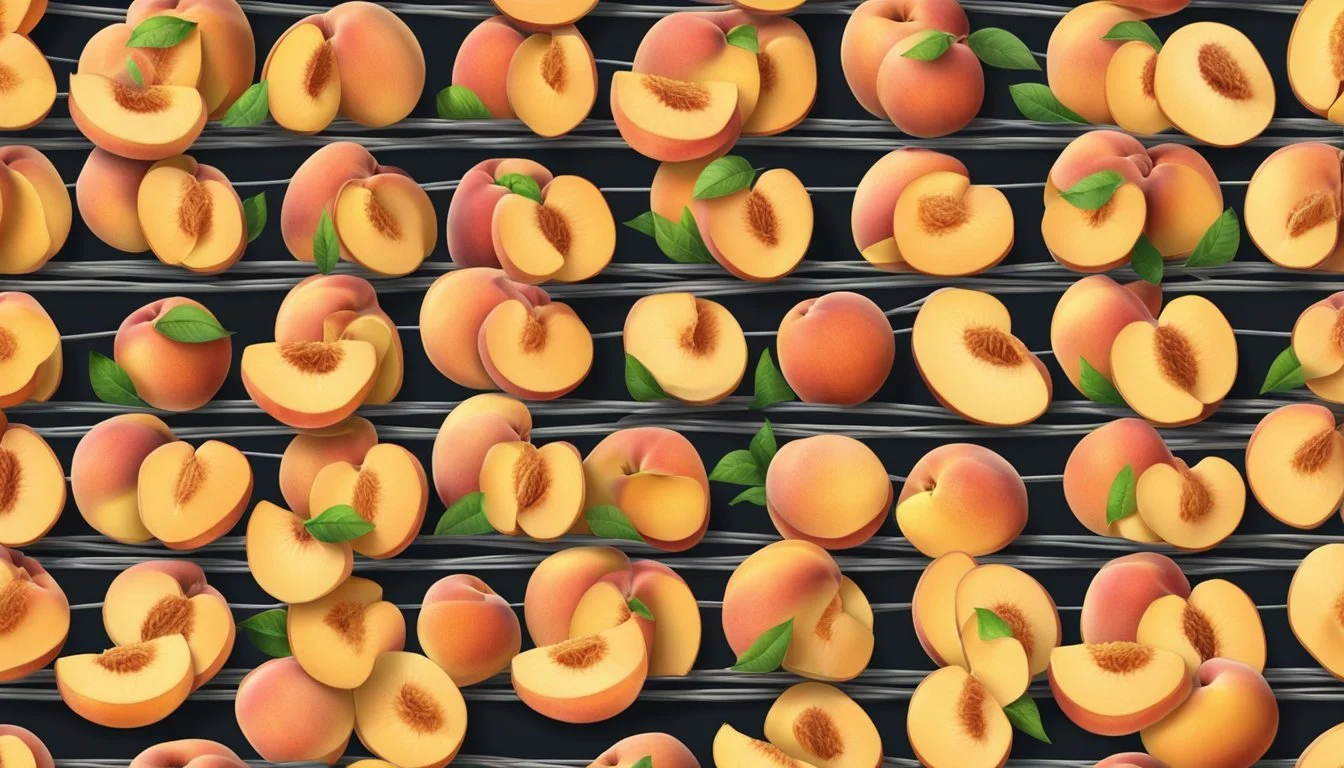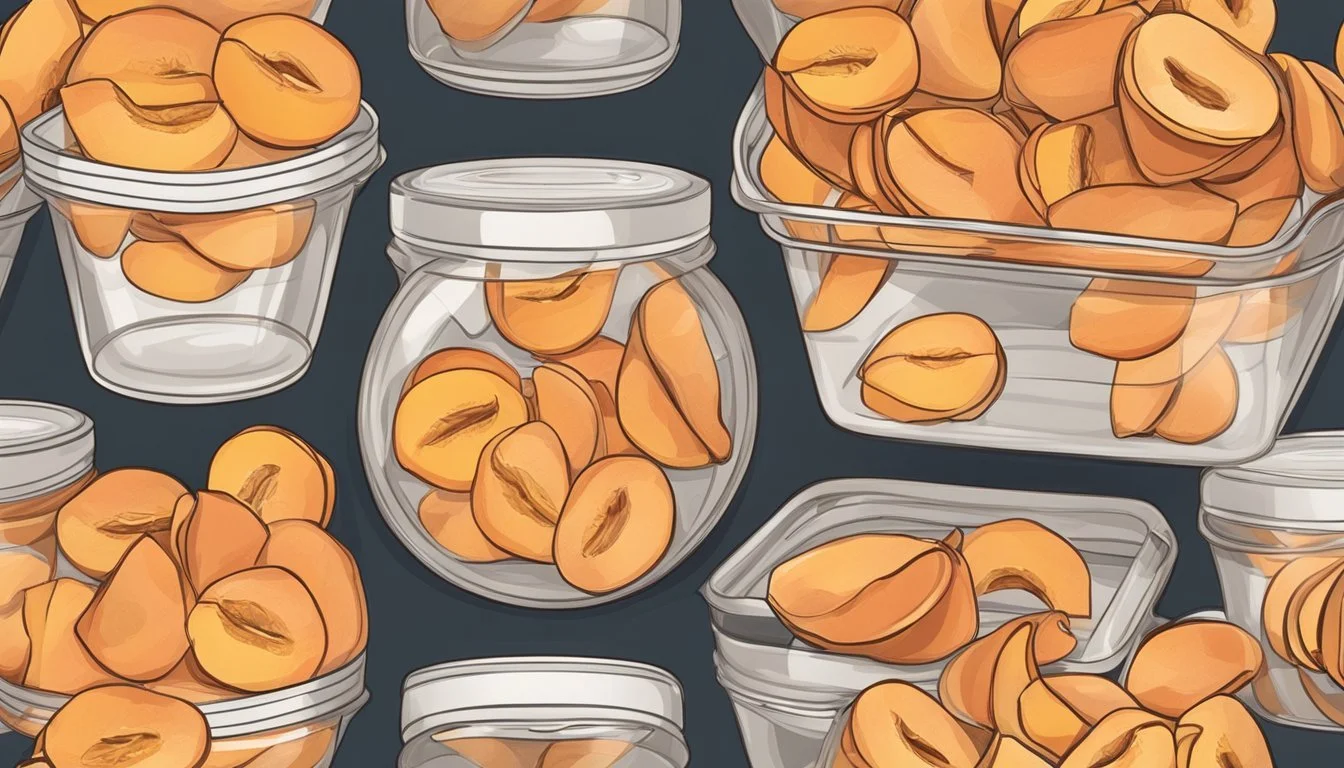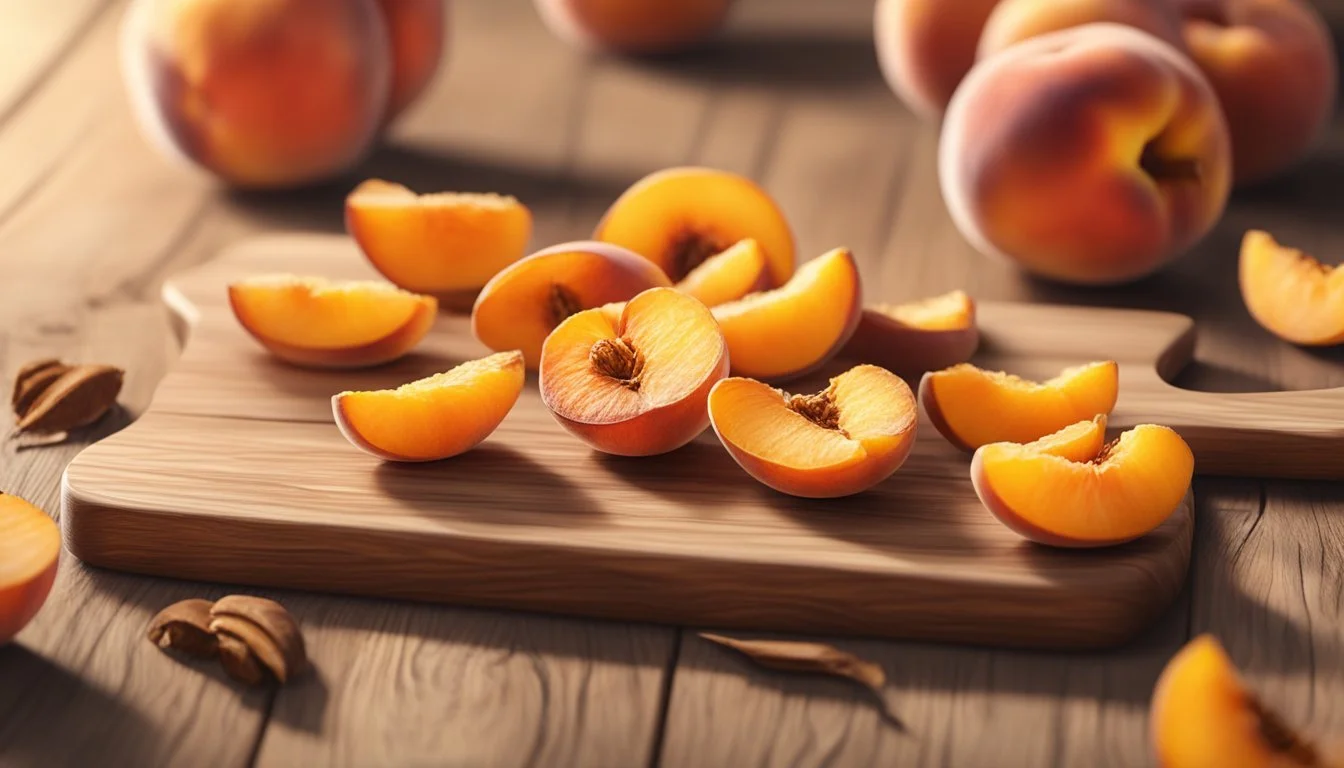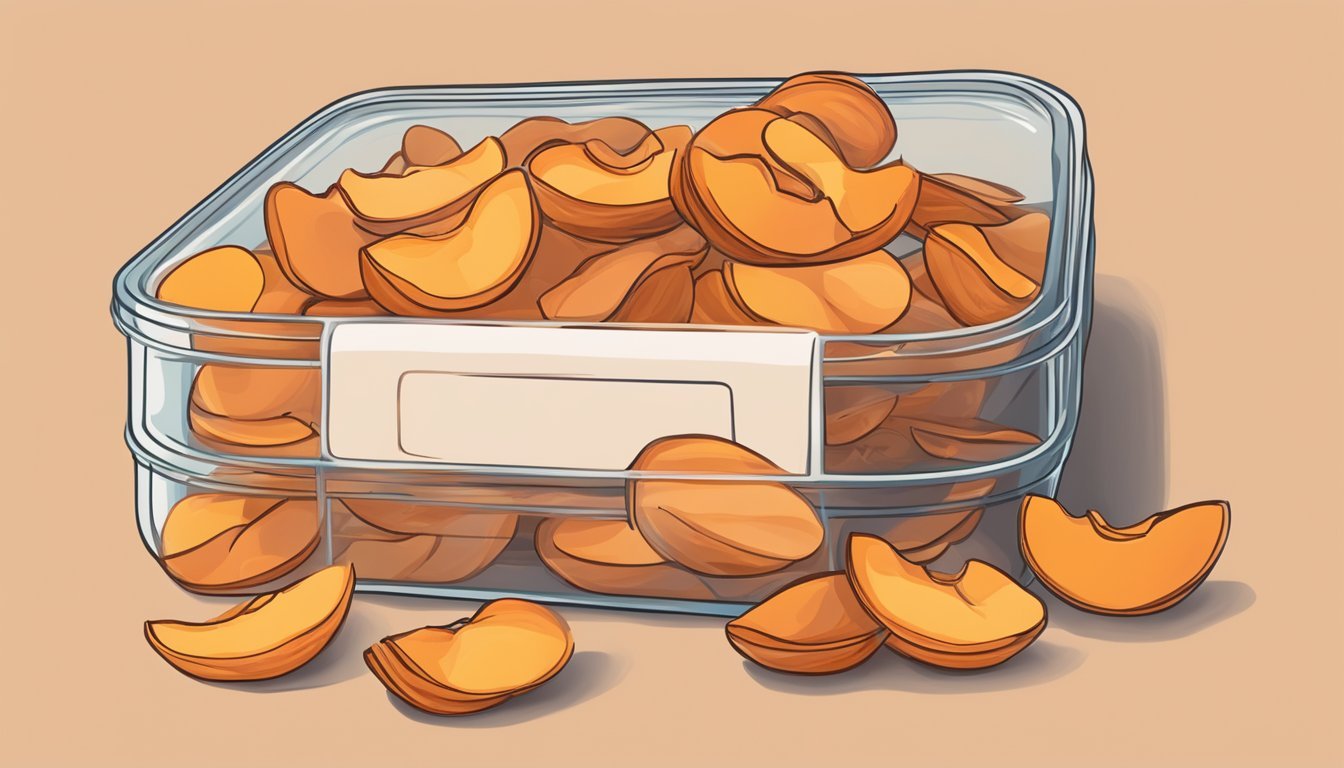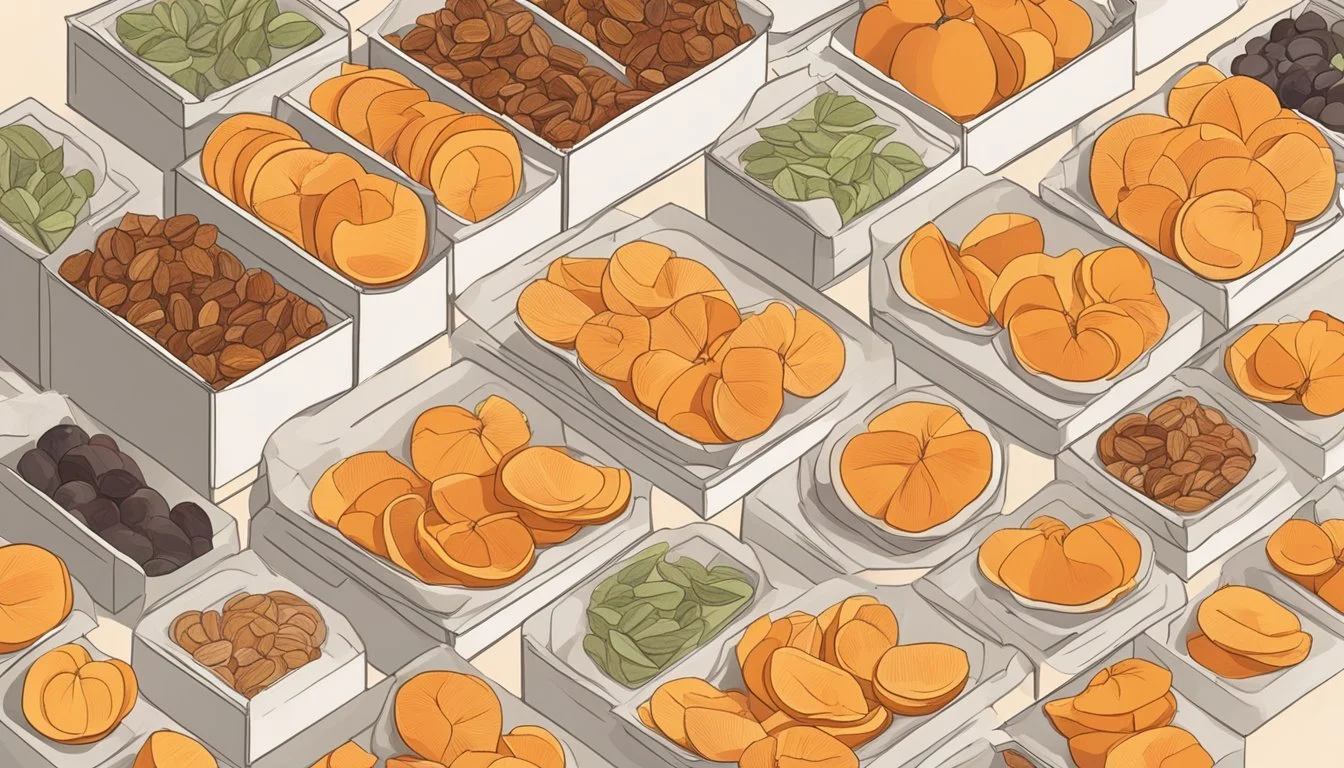How Long Do Dried Peach Slices Last?
Shelf Life and Storage Tips
Dried peaches are a long-lasting and convenient snack, perfect for those who enjoy the sweet taste of peaches all year round. They are prepared by removing the moisture from fresh peaches, which not only concentrates their flavor but also extends their shelf life significantly. When stored properly in a cool, dry, and dark place, these chewy treats can last from four months up to a year, making them an excellent pantry staple.
Shelf life is contingent on storage conditions, with optimal longevity achieved through minimizing exposure to moisture, heat, and light. After opening, dried peaches benefit from being sealed in airtight containers to preserve their quality. For those who prioritize maximum freshness and shelf life, refrigeration can further extend their use.
With ease of storage, dried peaches serve as a versatile food item that can be enjoyed as a standalone snack or as a flavorful addition to a variety of dishes. Their preserved quality is not only a function of proper storage but also an assurance of sustained enjoyment well beyond the season of fresh peaches, providing a delightful taste of summer that can be savored throughout the year.
Selecting Peaches for Drying
Selecting the right peaches is crucial for creating a high-quality dried fruit snack. This section details the important considerations to ensure your dried peaches are flavorful and maintain a good texture.
Choosing the Right Type
Selecting the optimal peach variety for drying is foundational to achieving a tasteful and healthful snack. Freestone peaches are often recommended due to their pit easily separating from the peach flesh. Opt for yellow peaches for a tangy flavor or white peaches for a sweeter taste.
Preparation Before Drying
Prior to drying, it's essential to wash the peaches thoroughly. It's advisable to peel peaches if the skin is particularly tough or if a smoother texture for the dried peach is preferred.
Cutting Techniques for Optimal Drying
Utilizing a sharp knife, cut the peaches into uniform slices or halves to ensure even drying. A paring knife may assist in making precise cuts. Peach halves may take longer to dehydrate but can result in a chewier snack.
The Role of Ripeness in Drying
It's imperative to use ripe peaches that are not overripe. The right level of ripeness ensures the fresh peaches do not lose their structure during the drying process and retains the natural sweetness.
Blanching Process
Blanching—briefly submerging peaches in hot water followed by a quick transition to cool water—makes it easier to peel peaches and can also help in preserving color and texture.
Pre-treating for Better Quality
Pre-treat peach slices with lemon juice or an ascorbic acid solution to prevent browning. This treatment can enhance the final appearance of dehydrated peaches and possibly extend their shelf life.
The Drying Process
Drying peaches effectively concentrates their natural sugars and flavors while significantly extending shelf life. The process revolves around removing moisture in a controlled environment to avoid spoilage and produce a high-fiber snack suitable for use in granola or various peach recipes.
Using a Food Dehydrator
To dry peaches using a food dehydrator, like an Excalibur, one must first slice the peaches evenly to ensure consistent drying. Dehydrator trays should be arranged so that there is ample space between the slices for proper airflow. The Excalibur dehydrator's temperature is typically set between 125°F to 135°F. Drying time can vary, but the peaches are usually sufficiently dry after 8 to 10 hours.
Oven-Drying Method
The oven-drying method serves as an alternative for those without a dehydrator. Peaches should be placed on an oven-safe rack in a single layer. The oven's temperature is set to its lowest, usually around 170°F, and the door is kept slightly open to facilitate moisture escape. Although this method takes longer, up to 12 hours, it should render the peaches dry and pliable.
Determining Adequate Dryness
Adequately dried peaches exhibit a leathery texture while remaining pliable. There should be no visible water beads when squeezed. It's critical to ensure that the fruit is free from moisture hotspots to prevent mold during storage. A properly dehydrated peach should not feel sticky or moist to the touch.
Conditioning Dried Peaches
Conditioning is a critical post-dehydration step for ensuring the remaining moisture is evenly distributed. Dried peaches are placed in an airtight container, such as a Mason jar, for 7 to 10 days. They should be shaken daily to facilitate even distribution. After conditioning, peaches should be stored in airtight containers away from light and heat to maintain optimal quality. Under ideal storage conditions, dried peaches can last for up to a year.
Proper Storage and Preservation
Maintaining the quality of dried peach slices hinges on effective storage and preservation strategies. These techniques ensure that the dried fruit remains a safe and healthy snack option while maximizing its shelf life.
Choosing the Right Container
Selecting an appropriate storage container is crucial for preserving the quality of dried peaches. Airtight containers such as mason jars or heavy-duty plastic bags are excellent choices as they prevent moisture and air from compromising the fruit. Vacuum-sealed bags can offer an additional layer of protection, effectively extending the peaches' freshness.
The Significance of Temperature Control
Temperature plays a pivotal role in the preservation of dried peaches. They should be stored at room temperature in a cool, dark place such as a pantry to maintain their quality. However, if one resides in a particularly warm climate, refrigerating the dried peaches may be a wise option to prevent spoilage.
Extending Shelf Life
To prolong the edible life span of dried peaches, consider integrating them into various mixtures such as granola bars or trail mix. When used in recipes like peach cobbler, ensure that any extra portions are stored swiftly in the freezer, where they can remain edible for several months.
Detecting and Preventing Spoilage
Regular inspection of stored dried peaches is instrumental in detecting early signs of spoilage, such as mold or off-odors. Should these signs be present, discarding the affected portions is important to ensure what remains is safe to consume. Proactive measures such as sealing properly and opting for dark, cool storage spaces can keep dried peaches in prime condition.
Usage Ideas for Dried Peaches
Dried peaches offer versatility and a concentrated burst of flavor, making them a delightful addition to a variety of culinary applications. Whether used as a stand-alone snack or integrated into complex dishes, they provide both nutrients and taste.
Creating a Nutritious Snack
Dried peaches serve as a healthy snack packed with fiber. They can be enjoyed solo or combined with other dried fruits (What wine goes well with dried fruits?) and nuts to create a delicious trail mix. For an extra layer of flavor and texture, dried peaches are a fantastic addition to granola, whether mixed in or used as a topping.
Trail Mix: Combine dried peaches, almonds, walnuts, and a sprinkle of dark chocolate chips.
Granola Topping: Add chopped dried peaches to yogurt with a scoop of honey-almond granola.
Incorporating into Meals and Desserts
They can elevate the taste and nutritional profile of both savory and sweet dishes. In terms of desserts, dried peaches are an excellent ingredient in pies, cobblers, and peach crisp. For savory meals, they can be diced into chutneys or mixed into grain or green salads for a sweet and tangy note.
Desserts: Chop dried peaches for a fiber-rich addition to a classic peach cobbler or oatmeal peach crisp.
Chutneys: Simmer chopped dried peaches with vinegar, spices, and sugar to create a peach chutney perfect as a condiment for meats.
Rehydrating for Recipes
When a recipe calls for fresh peaches, rehydrating dried peaches can be a substitute. Simply soak them in hot water or a flavored liquid, like tea or iced tea, to restore moisture. Once rehydrated, they are ready to be used in recipes like smoothies, where their concentrated flavor can enhance the beverage's taste.
Tea-Infused Peaches: Soak dried peaches in warm peach or ginger tea to rehydrate and infuse with flavor.
Smoothies: Blend rehydrated dried peaches with yogurt and honey for a nutritious smoothie.
Health Benefits
Dried peach slices are not only convenient and long-lasting but also retain much of the nutritional value of fresh peaches, making them a healthful addition to the diet.
Nutritional Value of Dried Peaches
Dried peaches are a nutritious snack, rich in important vitamins and minerals. They provide a good amount of dietary fiber, which aids in digestion, and are a source of vitamins like Vitamin A and Vitamin C. These vitamins are essential for maintaining healthy skin, vision, and immune system function.
Vitamin A: Crucial for eye health and skin integrity.
Vitamin C: Important for collagen production and immune defense.
Fiber: Supports digestive health and may help to prevent constipation.
Comparing to Fresh Fruits
While fresh peaches are known for their juicy texture and natural sugars, dried peaches offer a concentrated source of nutrients with the added benefit of a longer shelf life. They typically contain more calories per serving compared to fresh fruit due to the removal of water concentrating the sugars. When compared to other fresh fruits like nectarines and plums, dried peaches share many similar nutrients but are more portable and less perishable.
Promoting Healthy Eating Habits
Implementing dried peaches into one's diet can contribute to healthier eating habits. They are an ideal option for a healthy snack and can be easily incorporated into trail mix, yogurts, and cereal, providing a nutritious snack that can help satisfy hunger and prevent overeating. Dried fruits like peaches are a smart choice for those looking to add more fruit into their diet without the worry of rapid spoilage.
Comparison with Other Dried Fruits
In assessing the longevity of dried peach slices, it's instructive to examine their texture and flavor stability over time in comparison with other dried fruits and their usage in various culinary applications.
Texture and Flavor Variations
Dried peach slices typically maintain their sweet and slightly tangy taste profile for a considerable time if stored correctly, though not as long-lasting as some other dried fruits. Apples and plums, when dried, become chewy with a sweet to tart range, can last for 6-12 months. Apricots preserve their vibrant flavor and a pliable texture for a similar period. Bananas, known for their intensified sweetness when dried, have a shelf life comparatively close to peaches and must be consumed within 6-12 months for optimal quality. Cherries, with their deep, robust flavor, might also be enjoyed up to a year. Each fruit's unique sugar content and structure contribute to its shelf life and flavor profile, with firmer fruits like almonds potentially lasting longer due to their lower moisture content.
Usage in Different Cuisines and Dishes
Dried peaches are often a component in diverse dishes, known for their contribution to both sweet and savory recipes. Whether incorporated into granola bars, used as a fruit snack on the go, or even rehydrated for jams, the gentle, fragrant sweetness of peaches offers flexibility. Comparably, apricots may be used in similar ways, frequently found in Mediterranean dishes or as a portable snack. Cherries, with their tartness, are a favorite in baked goods and as a rich additive to cereals and snacks (What wine goes well with snacks?). Dried apples are classic components of American cuisine, often seen in pies and turnovers. The various culinary uses of these fruits, along with their distinct flavors and textures, define their role in kitchens around the world.
Frequently Asked Questions
This section addresses common queries regarding the longevity of dried peach slices and the appropriate methods for dehydrating peaches.
How Long Do Dried Peach Slices Last?
Dried peach slices have an appreciable shelf life when stored correctly. In optimal storage conditions, which is a cool, dry area away from direct sunlight, dried peaches can last:
Pantry: 6-12 months
Refrigerator: 6-12 months
Freezer: 12-18 months
To maximize shelf life, storing them in an airtight container is crucial to prevent moisture and other contaminants.
Can You Dehydrate Peaches with the Skin On?
Dehydrating peaches with the skin on is entirely feasible and often a matter of personal preference. The peach skin contains nutrients and fiber, which some individuals prefer to retain. However, for a smoother texture, one may opt to peel peaches before drying peaches. When choosing to dehydrate with the skin, ensure the peaches are thoroughly cleaned to remove any residues or pesticides.
Conclusion
Dried peaches serve as a nutritious and convenient option for healthy snacking. When it comes to shelf life, these dried fruits exhibit commendable longevity. Stored properly in a cool, dry place, they can last for about 6-12 months. If one opts to freeze them, they may retain their best quality for 12 to 18 months.
To maintain their freshness and extend longevity, one should ensure that dried peaches are well-sealed in an airtight container. It's recommended to regularly check for any signs of moisture or condensation, which can compromise their quality.
For those interested in culinary applications, dried peaches can be a versatile ingredient in peach recipes. They can be rehydrated and used in baking or cooked dishes, adding both sweetness and texture.
In summary, with proper storage, dried peaches present a reliable and healthy snack option, with a considerable shelf life and potential for diverse recipes.
Storage Method Expected Shelf Life Pantry 6-12 months Freezer 12-18 months
One should remember that while dried peaches can be safe to consume beyond these periods, the optimal quality might diminish over time.


